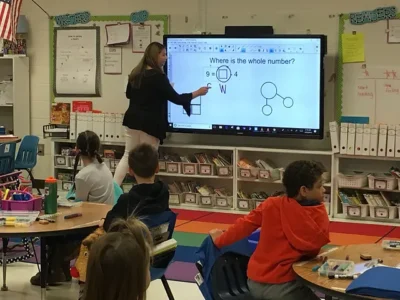If you’ve ever worked with students who struggle to read or spell, chances are you’ve heard of the Orton-Gillingham approach. This has been used for decades and is still one of the most effective methods for helping struggling readers. But what exactly is this approach? And how can it help struggling readers? Why have many companies started giving Orton-Gillingham training for teachers?
The following points help you explore the benefits of the Orton-Gillingham approach and why it’s so effective. From its multisensory approach to its structured and systematic instruction, read on to learn more about why this method works so well to improve children’s reading and spelling skills.
It Builds Confident Leaders
It is not only an effective way to teach reading, writing, and spelling to students with dyslexia, but it also builds confident leaders. This structured, systematic teaching method helps students understand how English works and see themselves as capable learners. Besides, teachers provide explicit, step-by-step instruction in phonemic awareness, phonics, spelling, and vocabulary. As such, this multisensory approach engages all learners, including those with dyslexia, and builds their confidence as they progress in their skills.
It Gives Students a Systematic Way of Reading
One of the benefits of the Orton-Gillingham approach is that it gives students a systematic way of reading. This means they can understand the underlying structure of language and how words are put together. This knowledge can then be applied to reading, spelling, and writing. As such, students who use this method tend to have better success in these areas than those who do not.
Multisensory Variations
There are many ways to vary the Orton-Gillingham approach to meet the needs of individual students. And one way to use a multisensory approach is by incorporating visual, auditory, and kinesthetic cues. This can be especially helpful for students who struggle with processing information in one modality or who have trouble with short-term memory.
Another way to vary the Orton-Gillingham approach is to use different materials. For example, you could use picture cards or objects instead of traditional flashcards. You could also use a whiteboard or chalkboard to write out words and sentences. And you could use a variety of games and activities to help reinforce concepts. It is important to find what works best for your student and be consistent with it.
Adaptability
The Orton-Gillingham training for teachers is highly adaptable to the individual needs of each student. The approach can be used with students of all ages, from preschoolers to adults. Moreover, it can be used in a one-on-one or small group setting. The approach can also be used in a traditional or online classroom setting.
Versatility for Variable Group Size
The Orton-Gillingham approach is highly versatile and can be used with individuals or groups of any size. This makes it an ideal solution for tutors who work with students of varying abilities and for classrooms where the number of students requiring extra support may fluctuate from year to year. Additionally, the approach can be adapted to meet the needs of both younger and older learners.
The Orton-Gillingham method is a powerful and effective tool for helping people with dyslexia improve their reading and writing skills. It uses multisensory techniques tailored to the individual’s needs, making it highly successful in addressing specific difficulties. With its emphasis on phonemic awareness and auditory processing, the OG method can provide long-term benefits for those struggling with literacy issues, leading to increased self-confidence and independence when it comes to reading and writing.
